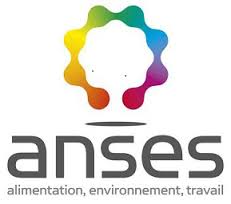Chemycal has been acquired by 3E
Learn MoreChemycal has been acquired by 3E
Learn MoreDiscover how Chemycal PRO helps you boosting your regulatory monitoring:

Diphenylguanidine (DPG) is a synthesis intermediate used mainly as a vulcanisation accelerator in the manufacture of rubber, making it more resistant to pressure and stress. Residues of this substance can be found in rubber articles such as floor coverings, footwear, toys and tyres. It has also been detected in drinking water and household dust. Its presence has been reported in the aquatic environment and seems to be associated with particles released due to tyre wear.
Diphenylguanidine currently has a harmonised classification at European level under the CLP Regulation. During the process to assess DPG under the REACH Regulation, ANSES concluded that this harmonised classification needed to be revised. In particular, the Agency determined that the level of evidence concerning the substance's reprotoxic nature justified an increase in its classification, following an updated assessment of the substance's various effects in light of the latest available data.
The Agency is therefore proposing changes to the classifications for human health, particularly regarding acute effects on the skin and eyes, as well as on reproduction and development. In several studies, DPG has been shown to be toxic by ingestion and corrosive to the eyes of rodents. In addition, numerous human studies have revealed cases of allergy to DPG. Most of these data are from retrospective studies carried out in the workplace that investigated sensitisation to DPG in patients with a suspected allergy to rubber gloves. Lastly, studies have shown the effects of DPG on fertility and development in rats and mice, as well as neurological disorders in rats.
"Classification as a Category 1B reprotoxic substance will have direct repercussions on the protection of worker health because of the obligations to implement reinforced preventive measures for carcinogenic, mutagenic and reprotoxic substances set out in the French Labour Code," explains Alice Mateus, who assessed DPG. ANSES is also continuing its work on the substance as part of an analysis of the best regulatory management option (RMOA). It aims to verify the need for additional regulatory measures, taking a strengthened classification into account.
Lastly, with regard to its environmental effects, ANSES is proposing a less stringent classification. Based on the most recent and reliable biodegradation study, DPG is considered to be rapidly biodegradable, with a low bioaccumulation potential. Studies show chronic toxicity for aquatic organisms, with algae being the most sensitive species tested.
Acute toxicity (ingestion); Category 3 (H301: Toxic if swallowed). ANSES has proposed using the value of 110 mg/kg as the Acute Toxicity Estimate (ATE) for the classification of mixtures, based on a study in rats;
Skin irritation; Category 2 (H315: Causes skin irritation);
Serious eye damage; Category 1 (H318: Causes serious eye damage);
Skin sensitisation; Category 1A (H317: May cause an allergic skin reaction);
Reproductive toxicity; Category 1B (H360FD: May damage fertility. Suspected of damaging the unborn child);
Specific target organ toxicity (repeated exposure); Category 2 (H373: May cause damage to the central nervous system through prolonged or repeated exposure);
Hazardous to the aquatic environment; chronic toxicity Category 3 (H412: Harmful to aquatic life with long lasting effects).
The harmonised classification proposal for DPG was submitted for public consultation on the ECHA website on 18 March 2024 for a period of two months. The aim of this consultation is to give all stakeholders the opportunity to comment on these proposals, by providing any additional scientific arguments and information they may have. Comments can be sent via a dedicated form on the ECHA website.
Following this consultation stage, ANSES will be asked to respond to the comments received. The initial proposal, comments and ANSES's responses to them will be submitted for analysis to ECHA’s Committee for Risk Assessment, which will then issue its opinion on updating the classification of DPG.
Based on this opinion, the European Commission will draft regulatory texts allowing the proposed classification to be included in the CLP Regulation.
SOURCE www.anses.fr
2013 © MyChemicalMonitoring. ALL Rights Reserved. About Us | Terms and Conditions